Your cart is currently empty!
The Glue Stick Terrain Guide To Corrugated Fiberboard
Corrugated fiberboard is commonly called cardboard in the States or combined board elsewhere. It is the mainstay of DMs who craft their own terrain.
Whether you go dumpster diving or order it from a supplier, you will do a better job building your terrain if you know something about cardboard.
The GST Guide To Corrugated Fiberboard brakes a technical papermaking topic into easy-to-understand ideas. You will be able to identify the right combined board when you are dumpster diving. Plus, you can talk to suppliers in a language they understand when you order it.
Contents
What is cardboard?
Cardboard is a generic name for several different kinds of heavy paper products. Because it is ambiguous, the name cardboard is not used in commerce and industry to specify products. Instead, it is called corrugated fiberboard or combined board.
What makes it corrugated fiberboard?
Corrugation, also called fluting, is what makes it corrugated fiberboard. Fluting is the wavy layer of paper in the middle of the corrugated board.
What is corrugated fiberboard made from?
Corrugated fiberboard is made from containerboard, a paperboard specifically made to manufacture corrugated fiberboard.
There are two kinds of containerboard:
- Linerboard – It is made from softwood pulp. Because it has longer fibers that improve its mechanical strength, it is used for the inner, intermediate, and outer face plies.
- Medium – It is made from hardwood pulp and recycled containerboard. Because it has shorter fibers that make it easier to bend into flutes, it is used to make fluting or corrugations.
What does fluting do for corrugated fiberboard?
The fluting, also called corrugation, makes corrugated fiberboard better in three ways:
- The flutes form rigid columns capable of supporting a great deal of weight.
- The space between the flutes is a cushion protecting the contents from side impact.
- The space between flutes also serves as an insulator protecting the contents from sudden temperature changes.
A Short History of Corrugated Fiberboard
English Hatmakers Solve A Problem
In 1856, two English milliners, Edward Allen and Edward Healey, solved a problem plaguing the top hat business. They found a lightweight way to strengthen a top hat to keep its shape – they invented pleated or corrugated paper. Not only did the corrugated paper liner stiffen the hat, but it also made them warmer. They were awarded an English patent in 1856.
A Yankee Protects Glass
Fifteen years later, on December 19, 1871, Albert Jones of New York patented an “improvement in paper for packing.”
He invented paper packing and shipping material for fragile items like glass bottles. He glued corrugated paper to a single sheet of linerboard.
Today, we call it single-face corrugated fiberboard.
Innovation Yields Mass Production
1874 was an important year for corrugated fiberboard.
G. Smyth made the first machine to mass-produce single-face corrugated fiberboard.
Then on May 5, 1874, Oliver Long updated and expanded the Jones patent. Long created “Packings For Bottles, Jars, & C.” He added a linerboard to both sides of the corrugation, thus making the single wall corrugated fiberboard we know today.
Box Making Drives More Innovation
People started making boxes out of the new single-wall corrugated fiberboard. Unfortunately, it was a difficult and slow process. So it was expensive. They weren’t widely adopted.
Fortunately, in 1879 a machine operator at Robert Gair’s Brooklyn paper bag factory made a mistake. Because of an adjustment error in the bag folding machine, he cut the bags instead of folding them. The owner, Scottish-born Robert Gair, realized that he could adjust the blades to score and cut simultaneously. This simple adjustment transformed the rate at which the boxes could be produced.
German Chemistry Creates Strong Paper
Although manufacturers used Gair’s boxes, it was mainly for small items such as tea and tobacco. It took a German chemist, Carl. F. Dahl to create the strong paper needed for the modern corrugated fiberboard box.
In 1879, Dahl changed the chemistry utilized to free cellulose fibers from wood pulp. The paper made from this new process is much stronger than the older process. Hence it is Kraft paper (the German word describing its strength). A U.S. patent was issued for the new process in 1884. Within two decades, Kraft paper became the dominant mass-produced paper.
Making Corrugated Fiberboard
A machine called a corrugator makes corrugated fiberboard. It combines continuous sheets, called webs, of containerboard using heat and glue to make the finished product.
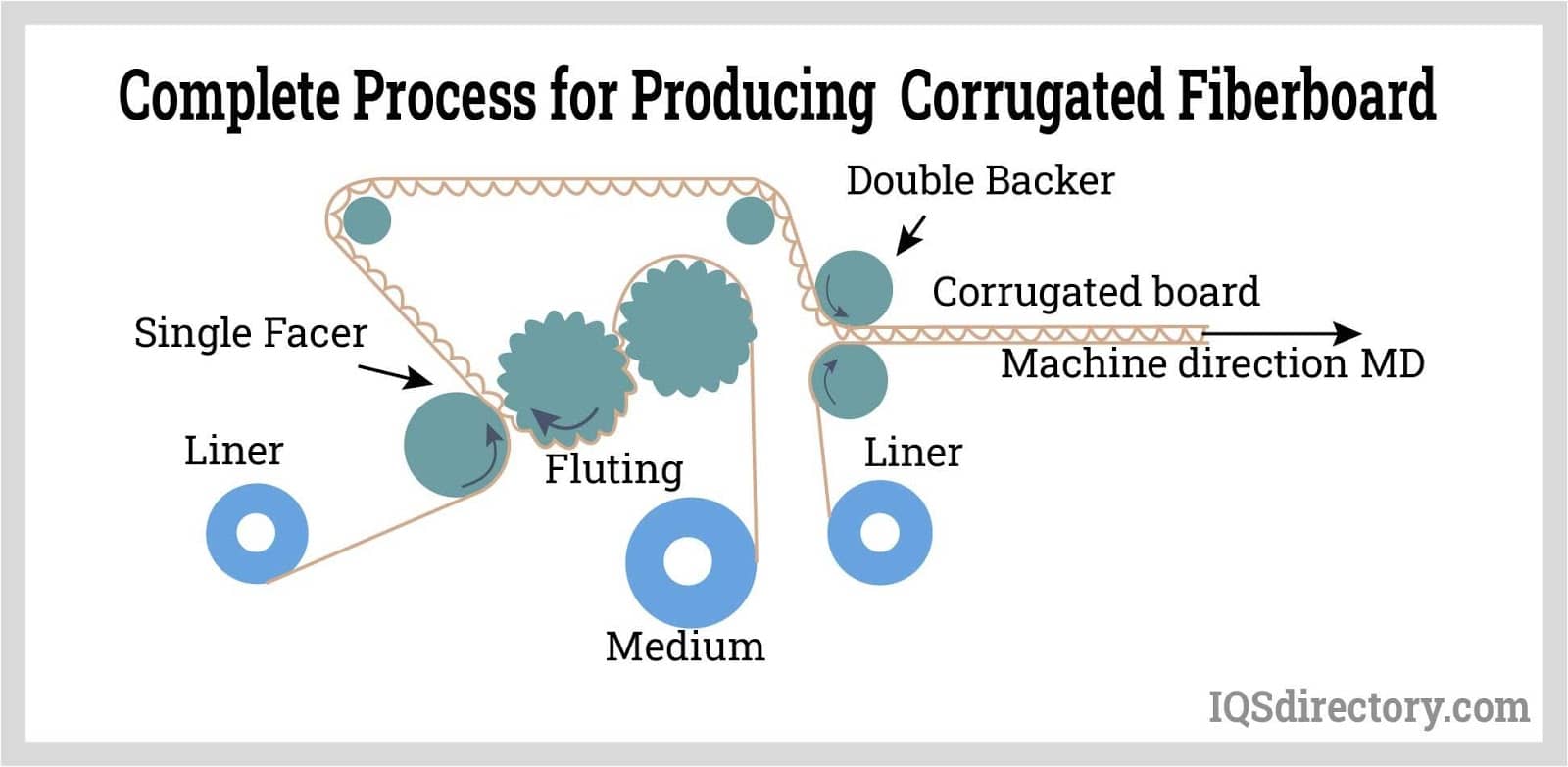
Fluter
The fluter creates the wavy inner part of the corrugated fiberboard.
The first station steam heats the medium, flexible containerboard made from hardwood pulp and recycled containerboard, to 170° C (338° F).
The second station presses the heated medium between rollers that corrugated it.
Single Facer
The single facer bonds the first web of linerboard to the fluting.
The first station heats the linerboard, strong, stiff containerboard made from softwood pulp.
The second station applies heat-activated glue to the peaks of the flutes.
At the third station, the flutes are pressed against a heated roller to activate the glue and bond the fluting making a single-faced web.
Curing
The single-faced web moves through a set of heated rollers that cure the glue. They apply pressure to ensure a tight bond between the linerboard and fluting.
Double Backer
The double backer bonds the second web of linerboard to the single-faced web.
The first station heats the linerboard, strong, stiff containerboard made from softwood pulp.
The second station applies heat-activated glue to the peaks of the flutes.
At the third station, the flutes are pressed against a heated roller to activate the glue and bond the fluting making a double-faced web.
Curing
The double-faced web moves through a set of heated rollers that cure the glue. They apply pressure to ensure a tight bond between the linerboard and fluting.
Dryer
The double-faced web passes through a dryer that reduces the moisture content of the paper.
Finishing
The double-faced web is trimmed to width. Depending on its intended use, it is cut to length and stacked or spooled onto a roll.
Types of Corrugated Fiberboard
Corrugated board is classified as follows according to the number of outer/intermediate plies and flutes
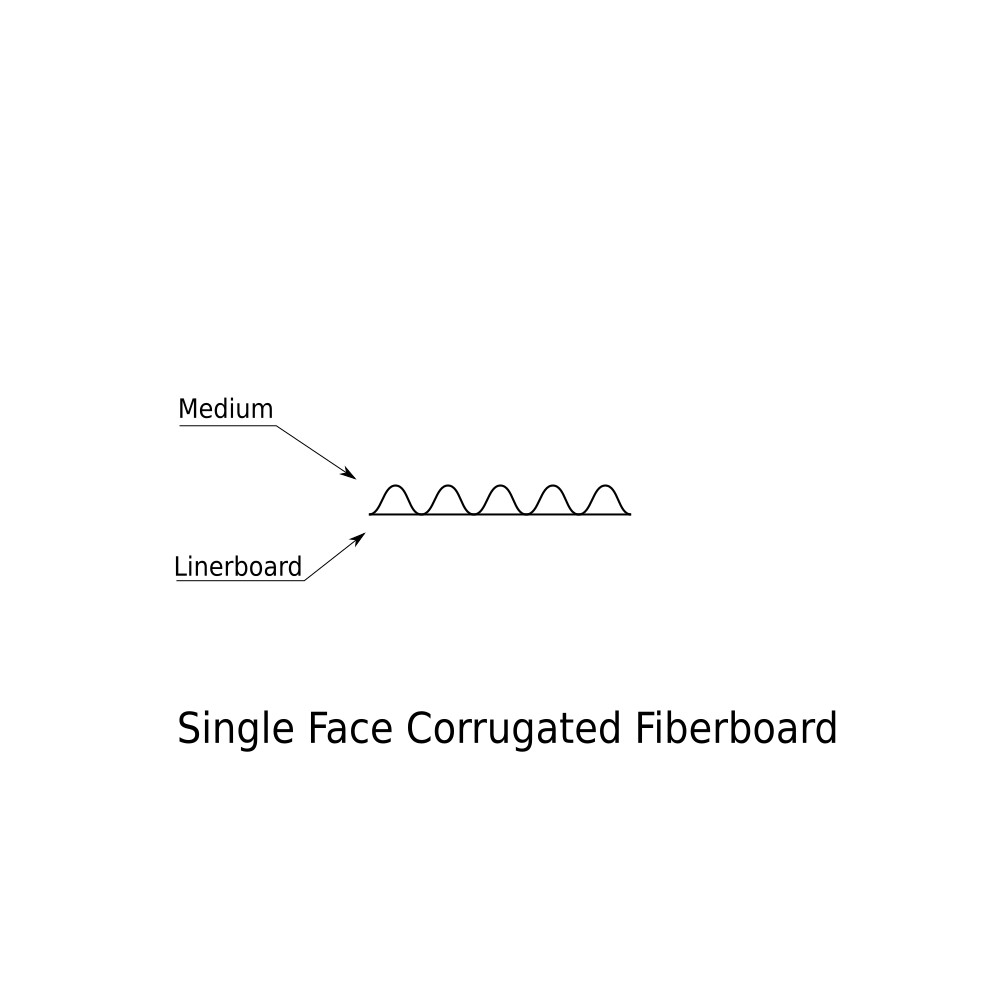
Single Face
One sheet of fluted medium is glued to a single ply of linerboard that is called the outer ply or face.
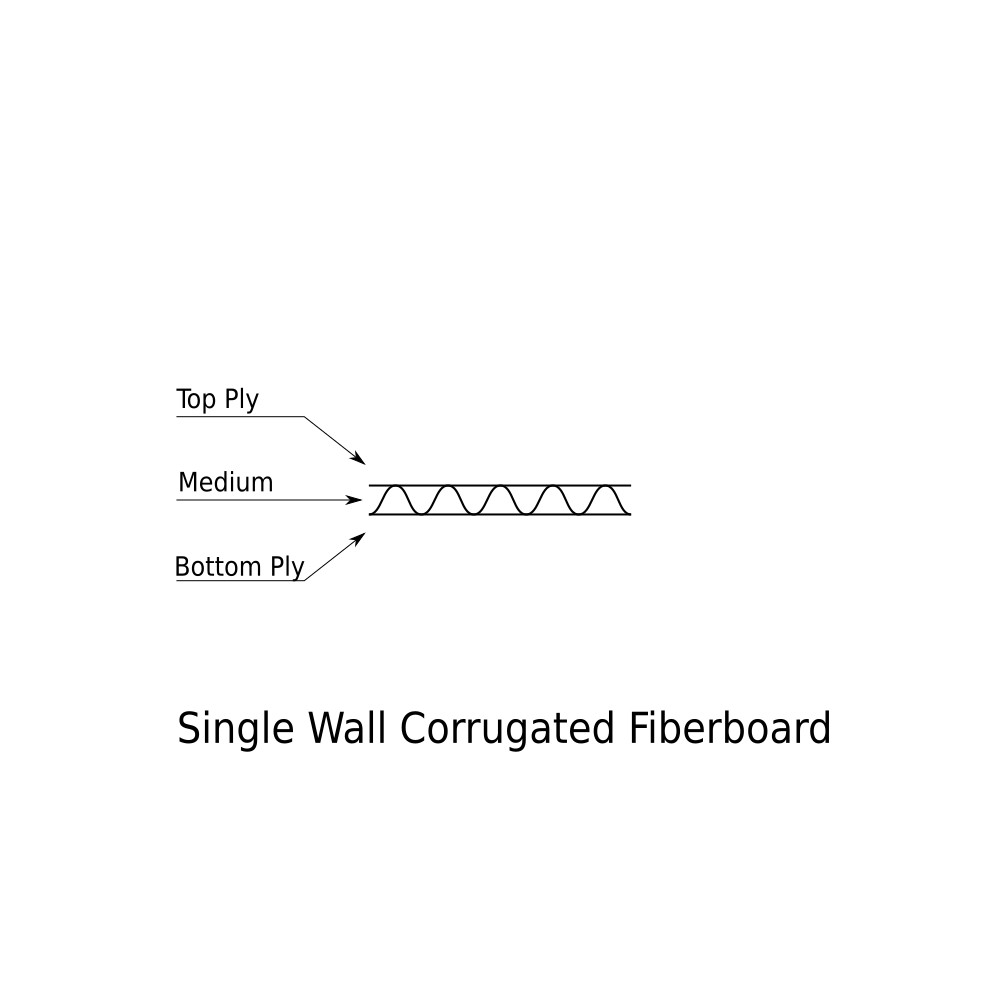
Single Wall
One sheet of fluted medium glued between two plies of linerboard. One linerboard ply is called the top ply or outer face. The other linerboard ply is called the bottom ply.
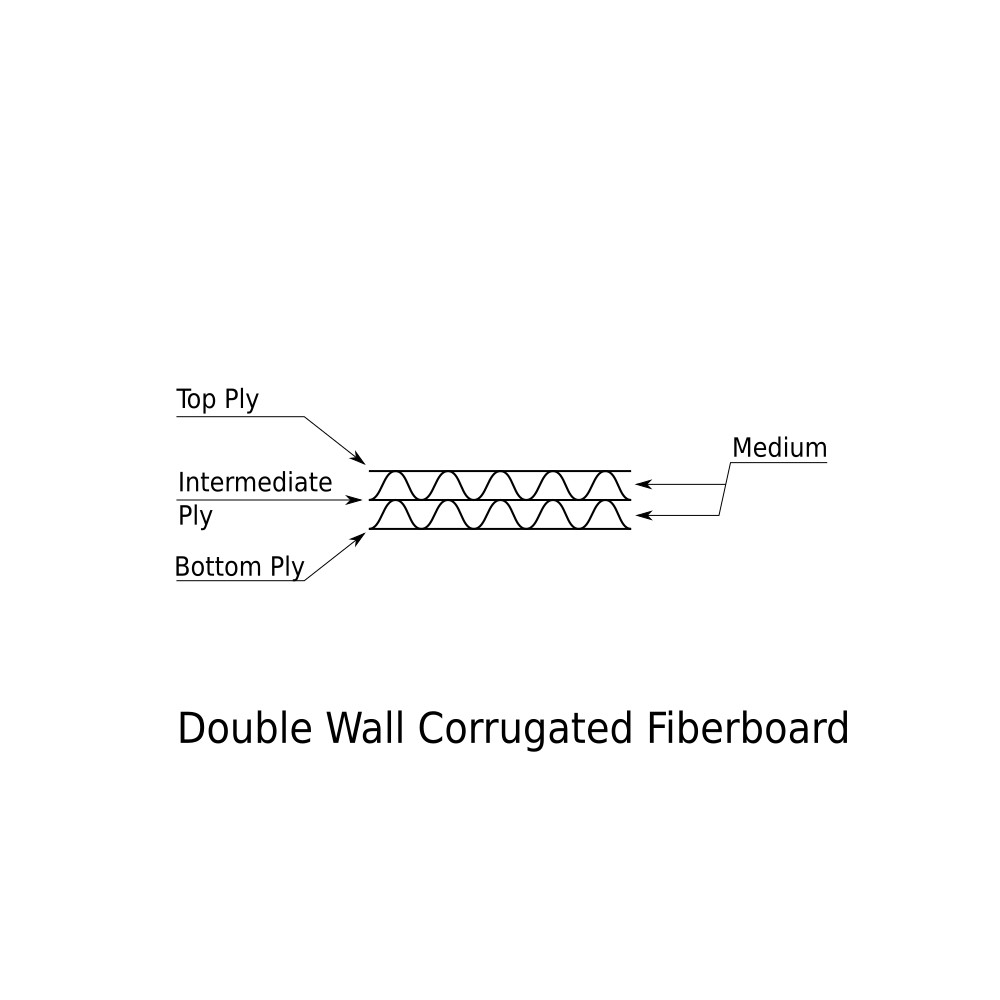
Double Wall
Two sheets of fluted medium glued between three alternating plies of linerboard. The first linerboard ply is called the bottom ply. The second linerboard ply is called the intermediate ply. The third linerboard ply is called the top ply or outer face.
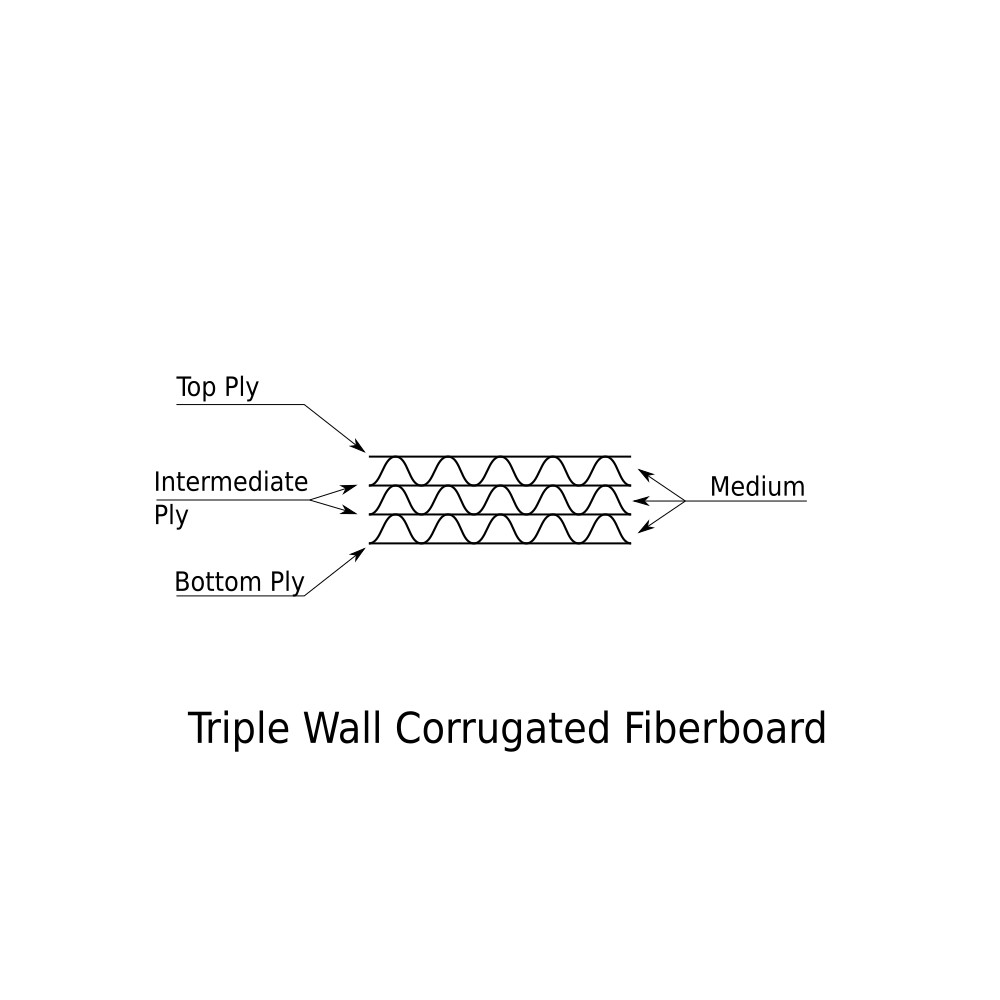
Triple Wall
Three sheets of fluted medium glued between four alternating plies of linerboard.
